Many semiconductor devices such as FPGAs require multiple power supplies.
At that time, since it is required to keep the power supply sequence, a power supply on/off control pin and output capacitor discharge function may be required.
This is an introduction to points to note regarding power supply sequencing for FPGA and useful sequence ICs.
Things to check before sequencing
Before considering the power supply sequence, it is important to check the slew rate of the output voltage of the power supply IC and module.
The power sequence must be observed to suppress rush current when power is turned on. However, if the slew rate of the output voltage of the power supply IC is steep, the rush current will increase.
Some recent switching regulators have a built-in soft-start function. It has the advantage of reducing the number of peripheral components and simplifying the circuit.
However, in the case of FPGAs and DSPs, etc., where many capacitors are arranged to improve the response performance to load fluctuations, the rush current at power-on may become large.
Switching regulators with a built-in soft start cannot control the slew rate, so the rush current increases, and there is a possibility that power startup problems such as the voltage not increasing monotonically may occur. Confirmation required.
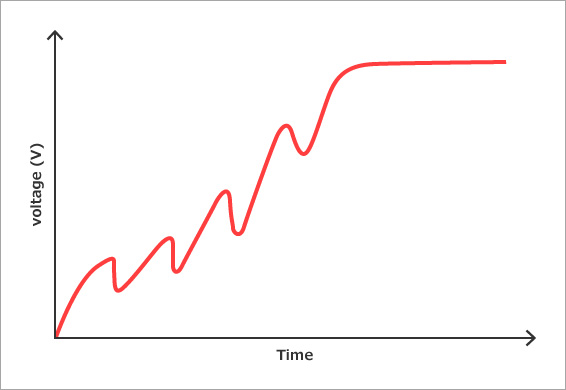
Regulation of power sequence
After confirming that there is no problem with the slew rate of the output voltage of the power supply, the next step is to check the power supply sequence.
The start-up sequence of the FPGA is determined by grouping multiple power supply lines, with A group first, B group second, and so on.
Figure 2 shows the power sequence required by Intel® FPGA Stratix® V.
If this sequence order is not observed, a large rush current will flow, affecting reliability, so be careful.
When shutting down, it is necessary to turn off the power in the reverse order to when turning on.
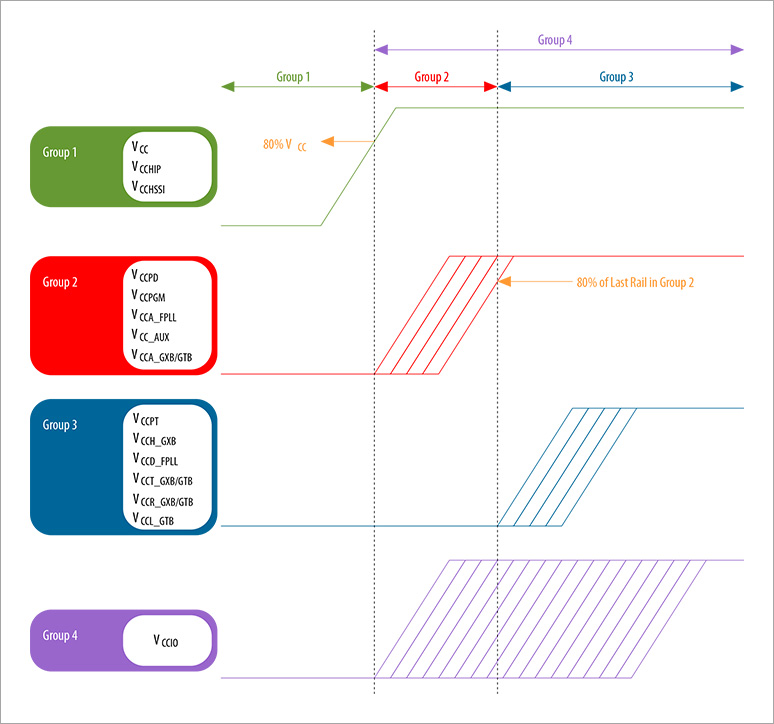
Tracking function
Using the tracking function causes the output voltages of the grouped power supplies to rise at the same time.
In general, power supply ICs and modules with different model numbers have different startup voltage slew rates.
As a result, the rise of the output voltages will be different even if the signals that activate the power supplies are simultaneous.
By using the tracking function, even if power supplies with different slew rates are used, it is possible to raise and lower the voltage at the same slew rate as shown in Figure 3.
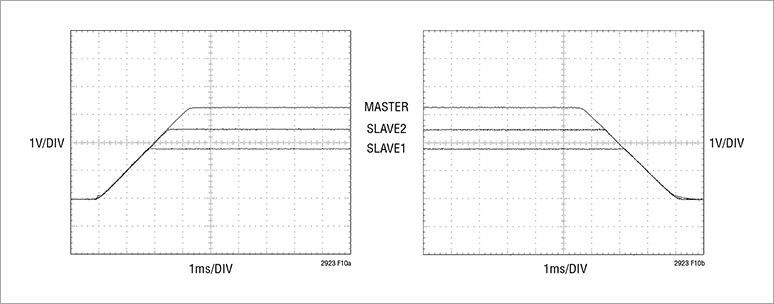
Analog Devices' LTC2923 is an IC capable of tracking control.
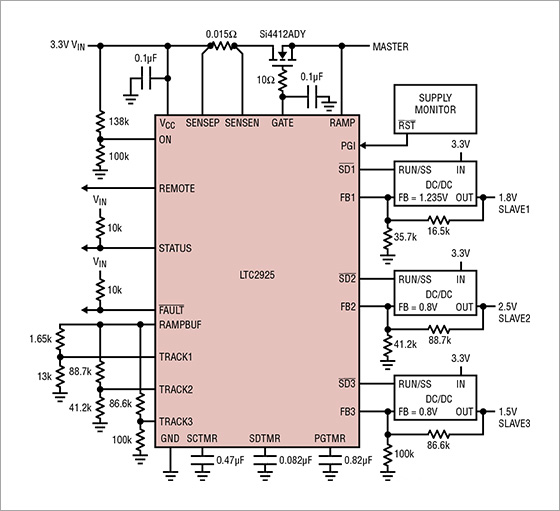
Sequence control
Since FPGA requires multiple power supplies, the design of sequence control using resistors and capacitors is extremely complicated.
Although it is possible to freely perform sequence control by using a microcomputer, etc., it is necessary to develop software, and if 12V is supplied as the main power supply, it is necessary to design a circuit that first supplies power only to the microcomputer. and the hardware design becomes complicated.
In addition, recent FPGAs and DSPs require an off-sequence, so a solution for sequence control is needed because the off-sequence cannot be controlled by resistor/capacitor control.
Analog Devices Power System Management (PSM)
For FPGA power sequencing, we suggest the PSM series LTC2977 from Analog Devices.
PSM products do not require software development like microcontrollers. The power supply sequence can be easily customized by changing the internal EEPROM register settings using the GUI shown in Figure 5.
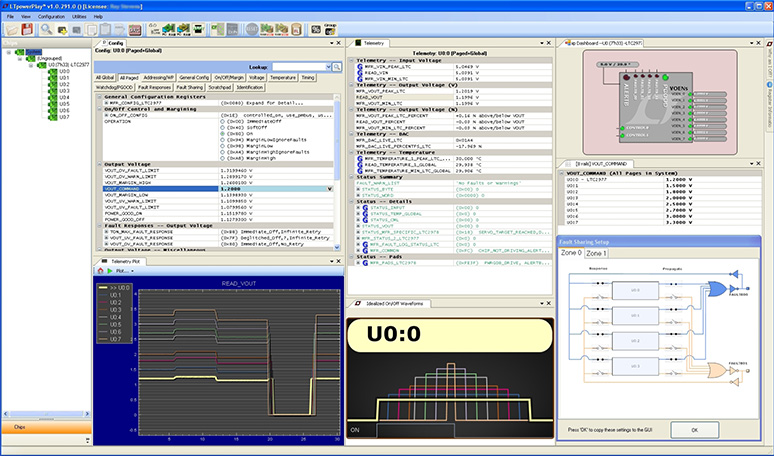
In addition, the LTC2977's operable voltage range is 15V, and the 12V power supply used in industrial equipment applications can be directly input, eliminating the need for a power supply circuit controlled separately from the FPGA like a microcontroller.
This makes it possible to construct the power on/off sequence required by the FPGA with a simple circuit configuration.

